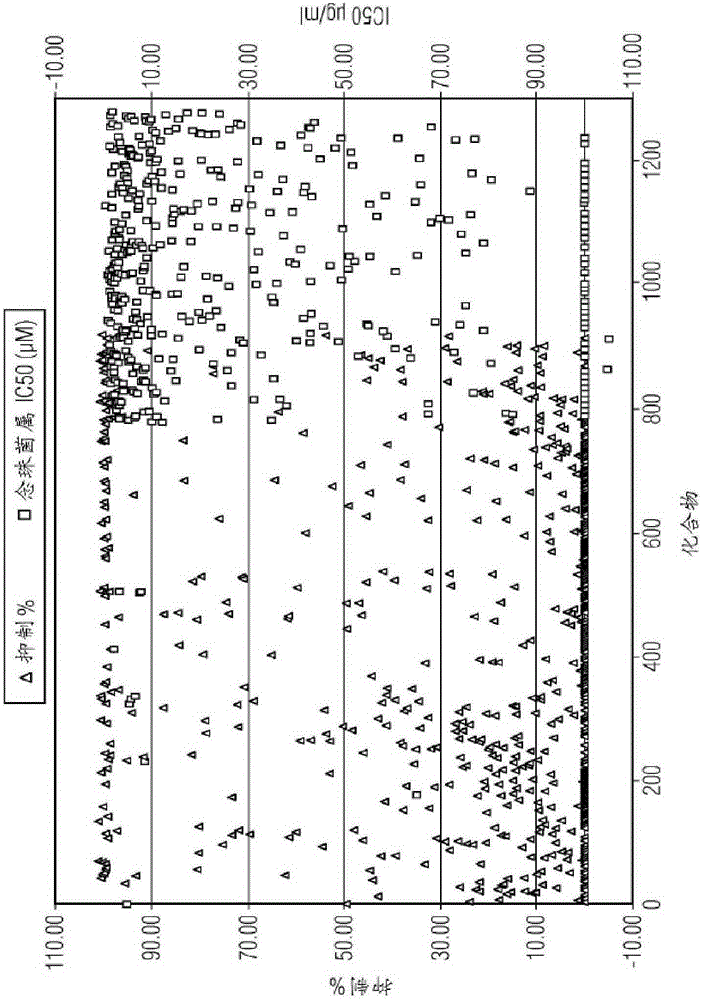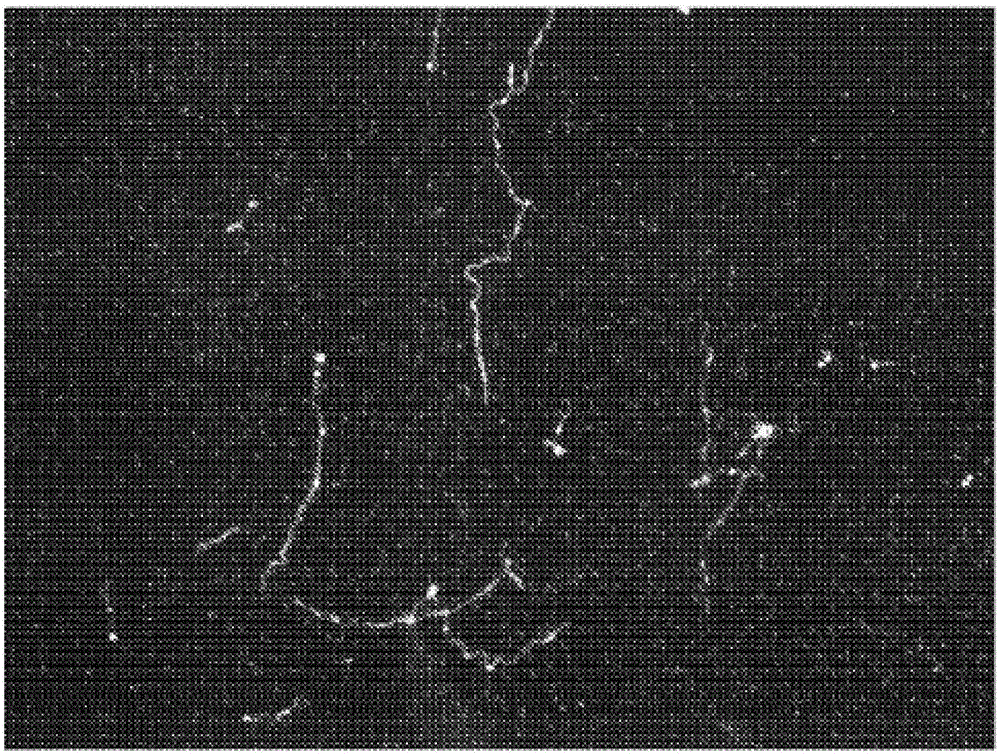Compounds and methods for treating candidiasis and aspergillus infections
A technology for Aspergillus and candidiasis, which is applied in the directions of botanical equipment and methods, applications, and drug combinations, and can solve problems such as liver damage
- Summary
- Abstract
- Description
- Claims
- Application Information
AI Technical Summary
Problems solved by technology
Method used
Image
Examples
Embodiment 1
[1160] Example 1: Screening for anti-Candida activity
[1161] More than 800 compounds were screened against clinical isolates of C. albicans GDH2346 at a single concentration of 10 μM (see below figure 1 triangle in ) and an additional 400 compounds were screened at 11 concentrations for IC 50 (see below figure 1 green square in ). Pass OD at 24 and 48 hours 600 and fluorescence to determine activity.
[1162] 106 compounds showed greater than 90% inhibition, giving a 12% hit rate. These compounds are all bactericidal. 109 compounds showed IC 50 IC of 50 <10 μg / mL.
Embodiment 2
[1163] Embodiment 2: antibacterial silk activity
[1164] Candida albicans (GDH2346) was grown in 10% FCS for 3 days to produce hyphae. Treat mycelia with compound 100 (8 μg / mL) for 0 min (see Figure 2A ), 15 minutes (see Figure 2B ), 30 minutes (see Figure 2C ) or 60 minutes (see Figure 2D ). Cultures were stained with Funga photovitamin (InVitrogen) and observed under a fluorescent microscope (100X magnification).
[1165] At low concentrations, compound 100 rapidly caused the death of mycelial cultures.
Embodiment 3
[1166] Example 3: Permeabilization
[1167] (A) C. albicans GDH2346 was treated with compound 100 at the indicated concentrations (μg / mL) for 30 minutes, then stained with PI and quantified by flow cytometry. Ethanol treatment was used to create 100% absorption.
[1168] (B) Cells were treated with 32 μg / mL of Compound 100 for the indicated times.
[1169] Compound 100 was assessed for its ability to permeabilize membranes in order to determine whether the compound acts on membranes like many host defense proteins or whether the compound acts intracellularly like histamine. Dose-dependent membrane permeabilization of Candida at concentrations of 8 to 32 μg / mL Compound 100, as shown by cell accumulation by PI, was evident within 30 minutes (see Figure 3A ). Following 5 min treatment with 32 μg / mL Compound 100, influx was rapid with >75% of cells permeabilized (see Figure 3B ).
PUM
 Login to View More
Login to View More Abstract
Description
Claims
Application Information
 Login to View More
Login to View More - R&D
- Intellectual Property
- Life Sciences
- Materials
- Tech Scout
- Unparalleled Data Quality
- Higher Quality Content
- 60% Fewer Hallucinations
Browse by: Latest US Patents, China's latest patents, Technical Efficacy Thesaurus, Application Domain, Technology Topic, Popular Technical Reports.
© 2025 PatSnap. All rights reserved.Legal|Privacy policy|Modern Slavery Act Transparency Statement|Sitemap|About US| Contact US: help@patsnap.com



